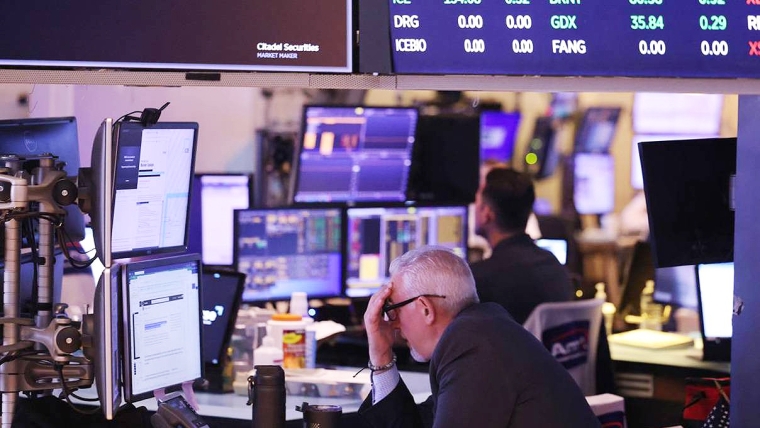
Despite all the policy-induced uncertainty wrought by President Donald Trump’s administration, US stock markets seem to be sending a message of normalisation. Major indexes have returned to where they were at the beginning of the year and continued to rise. What is going on? Are these new highs credible?
I think not. For starters, despite Trump’s recent policy reversals, uncertainty remains high, feeding fears that business and household confidence will suffer, slowing growth over time. Moreover, Trump is far from having completed his attempted trade negotiations and is nowhere closer to his stated goal of balancing the United States’ external account.
So large-scale an undertaking would require the world’s major powers to adjust their own savings-investment patterns and relationships vis-à-vis the US. Getting that to happen would entail an extraordinarily painful exercise, assuming it is possible at all.
Lastly, the Trump administration’s agenda needs to be considered in the deeper context of what the French economist and historian Arnaud Orain calls “finitude capitalism.” Orain distinguishes “between an open world carrying a promise of all-round and unlimited enrichment (for states, private companies, or individuals) and an ideology which argues the opposite – that the world is finite, that natural resources and global exports are in limited quantity, which entails that overall enrichment is limited, and even impossible.”
When the outside world seems to present fewer opportunities than risks, it becomes necessary to defend one’s territory. But if the economic system becomes less optimised and efficient as a result of this, so be it.
In any case, faced with continuing uncertainty and the threat of persistent inflationary pressures, all eyes will be on central banks. The US Federal Reserve has adopted a wait-and-see attitude as it monitors the effects of Trump’s trade war, and the European Central Bank is already signaling that the new uncertainty will drag down economic growth.
With major countries closing in on themselves, the global economy is being reshaped before our eyes. It is reasonable to expect less efficient management and less diverse supplies to push up prices and therefore interest rates.
Though attention inevitably will shift from demand to supply, the objective for monetary policy will remain the same: to anchor inflation expectations at a “sufficiently low level,” and to adopt a policy for bringing inflation back to the target rate in the medium term. The challenge, then, is twofold: in addition to keeping inflation expectations low, central banks will need to acquire analytical agility and new tools to stay on top of an ever-changing situation. In such an uncertain environment, forward guidance cannot be overly precise. Instead, a multi-scenario approach (a departure from the current practice) will ultimately provide more relevant information to all economic actors.
Another major factor is trade flows, which are changing fast. One clear development, judging by voting patterns at the United Nations, is a reduction in the geopolitical distance of trade. While the US reduces its trade with China, the People’s Republic continues to pivot more toward emerging markets and developing countries, becoming the top trade partner for many of them. Have US markets fully accounted for what this means?
Financial globalisation is another major issue. The link between geopolitical tensions and financial stability is clear. There are two interdependent channels to watch here. The first is financial, as reflected in capital restrictions, heightened risk aversion, and other variables that affect liquidity.
The second channel is economic and concerns the extent to which new protectionist measures will disrupt value chains. Current trends (in both channels) suggest that geographical diversification in asset allocations could decline over the medium term, with the resulting risk-return balance likely settling at lower levels.
Finally, in a more unstable geopolitical environment, one must factor in risks that are less endogenous to the economic and financial sphere, such as cybersecurity threats and the complex transition to renewable energy sources.
In such a global economy, where the logic of abundance through globalisation is giving way to finitude capitalism, there may be less tolerance for significant current-account imbalances. The more that governments perceive geopolitical and economic risks, the more they could limit trade and financial flows vis-à-vis regions of the world that are considered less friendly. If such insularity becomes too restrictive, we will have foregone the well-known benefits of diversification.
Given the big-picture, medium-term outlook, financial markets can remain unscathed for only so long. For US stock markets in particular, high and rising indices are not sustainable.
Hervé Goulletquer is an economist at Accuracy, a business and financial consultancy. Copyright: Project Syndicate, 2025, published here with permission.
1 Comments
Liz Trump, anyone?
Is US dollar flirting with a ‘Liz Truss moment’ amid tariff chaos?
This week, the US Congress added the equivalent of two Russian economies to the federal deficit
https://asiatimes.com/2025/07/is-us-dollar-flirting-with-a-liz-truss-moment-amid-tariff-chaos/

We welcome your comments below. If you are not already registered, please register to comment
Remember we welcome robust, respectful and insightful debate. We don't welcome abusive or defamatory comments and will de-register those repeatedly making such comments. Our current comment policy is here.